 |
 |
 |
 |
 |
|
1200 Build Up continued |
|
Headers
|
|
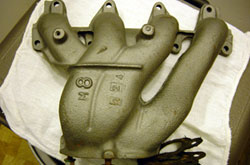 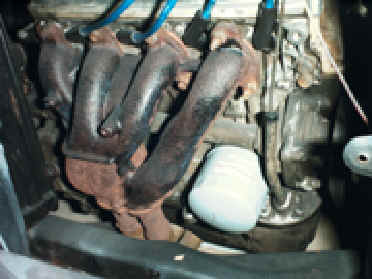 Kirk racing ($300), S&S Racing, Jackson Racing, RS header, Pacesetter, Thunderbird headers Kirk racing ($300), S&S Racing, Jackson Racing, RS header, Pacesetter, Thunderbird headers
TODD- The RS makes more torque than any header I've used except for A&Ts header. Especially if the 1200 was stock or mildly modified. Next in line was my el-cheapo JC Whitney header (Thunderbird???). I traded the RS exhaust from my black car for a Kirk header and I was VERY disappointed.
RS manifold
Jackson Racing
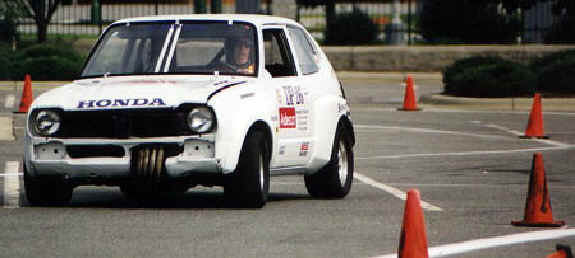 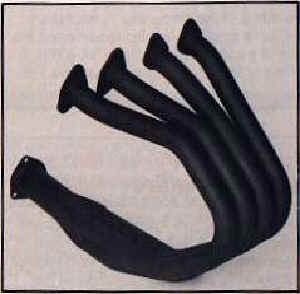
|
|
Exhaust
|
|
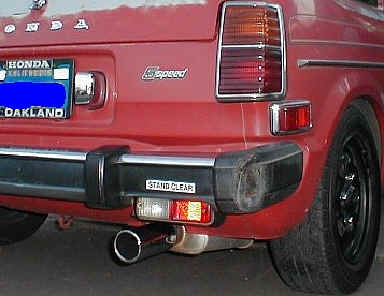 My exhaust is 2" from the header back. I have a 25" cherry bomb muffler in the front spot under the shifter. I've also tried several kinds of mufflers in the back resonator position. One that was nice for my stereo listening was a Dynomax (not the
superflo), this was the quietest system I've had. At one time I had just a Supertrapp concealed disk, it was much louder, and the reason I put the cherry bomb on. The setup I have right now uses some unknown resonator we found on the floor of a Midas muffler shop. I got a ticket for modified exhaust ONCE with it, But it was at 3:00am on a desolate hwy and the cop didn't pull me over for that (he couldn't read my reg. sticker). One thing to kind of stay away are the giant tips everyone likes these days. They can make the system louder, I'll confess that My tip is 3" just cause it looks cool. Anything you put under there should make a
"feelable" difference Cut the A-pipe before the flex joint (if it's bad) and get another from JC Whitney $40.00us with a glass pack style muffler from JEGS (17"x2"id) 15.00, resonated exhaust 3" tip also from JEGS 27.00 and have a local shop install it with aluminizes pipe for another 90.00. NOT that loud at all !
DynoMax mini Turbo muffler. My exhaust is 2" from the header back. I have a 25" cherry bomb muffler in the front spot under the shifter. I've also tried several kinds of mufflers in the back resonator position. One that was nice for my stereo listening was a Dynomax (not the
superflo), this was the quietest system I've had. At one time I had just a Supertrapp concealed disk, it was much louder, and the reason I put the cherry bomb on. The setup I have right now uses some unknown resonator we found on the floor of a Midas muffler shop. I got a ticket for modified exhaust ONCE with it, But it was at 3:00am on a desolate hwy and the cop didn't pull me over for that (he couldn't read my reg. sticker). One thing to kind of stay away are the giant tips everyone likes these days. They can make the system louder, I'll confess that My tip is 3" just cause it looks cool. Anything you put under there should make a
"feelable" difference Cut the A-pipe before the flex joint (if it's bad) and get another from JC Whitney $40.00us with a glass pack style muffler from JEGS (17"x2"id) 15.00, resonated exhaust 3" tip also from JEGS 27.00 and have a local shop install it with aluminizes pipe for another 90.00. NOT that loud at all !
DynoMax mini Turbo muffler.
|
|
Head Porting
|
|
An EB3 head needs little more than a clean up and remove the casting ridges. Don't get it polished.
Best thing for a standard head for more power is to clean up the ports (get rid of the casting
dags), port the throat area (blend the seats, there a big gains here), blend and smooth the short side radius. Polishing the ports does not increase flow velocity, if anything a slightly rough surface will. BUT you can polish the exhaust port as a polished port will not have carbon build up on it so much.
Don't hog out the ports, they are big enough, don't cut the guides flush with the head. If you fit new guides spend a little extra on bullet nose guides.
I also polish the combustion chamber after ccing them. Same sort of thing, less chance for carbon build up. Lastly go for a good valve job. All head places should give you a three angle seat, but ask for a three (to 5) angle job on the valves
(ie a couple of back cuts).
None of this should cost very much but will give you a noticeable increase in power and economy on a standard motor.
|
|
Head Gaskets
|
|
FELPRO (cheap gaskets) are actually very good (thicker than Honda gasket’s so they’ll lower compression) and I have not had a problem with
these Other gaskets
In your price calculation you forgot some very important things ... timing belt, bearings, gaskets and seals. It's fairly simply - Honda gaskets work and are expensive, generic gaskets are cheap and leak. Some seals are common, like the crank seals that can be bought from a bearing shop or similar and usually have the Honda part numbers on them, but things like the sump gasket, oil pump screen, cam seal, rocker cover gasket etc. are best got from Honda (unless you like a very oily engine). I can't tell you how much it'll all cost (go talk to your local Honda dealer), but I can tell you they won't be the cheapest part of a rebuild by a long way.
|
|
Valve Springs
|
|
Iskenderian springs, part #455/456. They are not listed in their online catalog, but available none the less. They are actually for a Ford 2 liter motor (Pinto), but have worked fine for years in 1200 motors.
|
|
Torque Rods and Bushings
|
|
 Nylon bushings from a streetrod 4 link. Yes RH and
LH. Nylon bushings from a streetrod 4 link. Yes RH and
LH.
Dons EB engine torque rod
 Polyurethanes: Polyurethanes:
Urethane over
comes ruthless vehicle trek, produces crisp handling, maintains
geometry control, extended life span with the soft, comfy ride of
rubber. Some of the benefits are optimized braking capacities,
improved tire performance & tire wear, remedy or optimize wheel
alignment settings, enhance vehicle cornering stability.
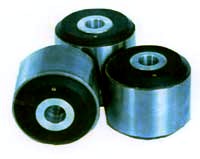 For
Pourable Polyurethanes: Webster
& Sons Limited Canada For
Pourable Polyurethanes: Webster
& Sons Limited Canada
For Polyurethane Bushings:
Whiteline
Automotive (Minto NSW Australia)  Whiteline
& Superpro from PDM
Racing in (Canadian Distributor) Burnaby, BC Canada Whiteline
& Superpro from PDM
Racing in (Canadian Distributor) Burnaby, BC Canada
Superpro
down loadable PDF Catalogue
F Control Arm Lower - Inner Bush SPF1468K 1 3/73 to 6/79 , 29mm OD bush 4B,2T
F Control Arm Lower - Inner Bush SPF1473K# 1 7/79 on 4B,2T
F Strut Bar to Chassis Mount SPF1469K 1 3/73 to 6/79 4B
F Strut Bar to Lower Control Arm SPF1316K 1 3/73 to 6/79 4B
F Strut Bar to Lower Control Arm SPF1642K 1 7/79 to 11/83, 33.5 OD bush 4B,2T
F Sway Bar Mount to Chassis Bush SPF1333-_ _K 1 Measure bar diameter 10,12,13,14mm available 2B
R Radius Rod SPF1470K 1 Rear bush 4B,2T
R Radius Rod SPF1471K 1 Front bush 4B,2T
The SPF# is the part Number you just enter the proper # in the
Whiteline web store
Noltec
Suspension Parts listed on line (Thornleigh NSW Australia) Lower control arm - inner F 2 N52068 1 Incl. crush tubes
Radius rod to chassis F 2 N82072 1
Radius rod to control arm F 2 N82071 1
Sway bar - mount 14mm F 2 N22094 1 14mm
Sway bar - mount 16mm F 2 N22095 1 16mm
Engine steady-both ends F 2 N92073 1
Lower control arm - inner R 4 N62067 1 Incl. crush tubes
Lower control arm - outer R 2 N52068 1 Incl. crush tubes
Trailing arm R 4 N62069 1 Incl. crush tubes Spectrum Rubber (urethane bushings) Not cheap
(Dunheved NSW 2760 Australia)
|
|
Ignition
|
|
Convert to electronic ignition using a Pertonix conversion. They are more reliable than the points they replace. Make sure to replace your coil at the same time though as the old OEM coils seem to fail soon after the conversion is done. This unit can be used alone or to trigger a MSD.
Actually the coil for the points system doesn't have an internal resistor, it's external.
And it's a little more complex than just a couple of wires (but not a lot).
You should use a coil designed for an electronic system and get rid of the ballast resistor as you don't really need it (but make sure you get a 12V coil not a 6V one if you get rid of the resistor). You need to wire the igniter in but it's easy enough. Just look at a wiring diagram for both cars and you'll work it out easily enough.
|
|
Transmission
|
|
--Auto to Manual Conversion--
No physical alterations need to be done. When you pull the manual trans. be sure to get EVERYTHING, the clutch and pedal assembly, shifter, flywheel and bolts, etc. It is extra important to get the manual flywheel and it's bolts because the auto flywheel and bolts are different. Everything bolts up as on the standard car. When you remove the auto trans. you must remove all the parts, the shifter cable and bracket, the trans. cooler lines in the
radiator. The axles are the same units on both transmissions and will not need to be changed (unless they're bad) Plug the backup light harness into the manual trans. the same as it is on the auto. When you remove the shifter, there will be a wiring harness left from the neutral safety switch. It will run under the carpet toward the firewall and then to a connection behind the fuse box. Follow it to that connection and unplug it at both places. Then you plug the ends into each other. By doing this you take out the neutral safety switch and the wiring will be the same as the manual car. Your backup lights will function, and the ignition switch will function as on the manual car. If you plan on doing any modifications, such as lengthening the shifter below the ball for shorter shifts, lightening the flywheel, etc. it would be good to do those while you have everything out. It is also a good idea to invest in a rebuild set for the manual shifter to replace all the bushings and various rubbers, by the time Hondas reach the yard most of that stuff is worn out. I would also advise you to use a '76-79 Accord clutch, it is the same diameter as the Civic clutch but has 6 springs as opposed to 4 and it goes on without
modifications. Good choices for transmissions have been discussed in other posts. Hope this helps, I did this swap about 2 years ago and you will be amazed at how simple everything is.
Clutchmaster’s sells clutch setups- $95 for civic, $100 for accord. When I swapped to an EN 5 speed, all I did was drop the 4
speed out and bolt up the 5spd. I had to file about 2mm off the gearbox edge of the bracket because it was fouling on the casing and the bolt wouldn't start. I've had no problems with the clutch so I don't see why you would need the EN parts if you didn't have them.
As to your other question regarding the gear ratios, you have only a couple good choices if you are running a basically stock 1200. Best choice would be an 80-81 1300 Civic 5-sp. next best choice is 80-81 1500 Wagon only. The wagon is only slightly taller overall than the 1300 gearing. The 82-83 variants of both the above are much taller gearing, especially in 5th and a stock 1200 can't pull them. If you are going to hop up your motor then I would look for the Wagon gearbox. I don't have the info right now, but I have it at home, so I'll post again with the series numbers to look out for.
Tranny Gearing
Best street box is GJ 86.. from 80 1300
Next “best" is an early 1200 4 speed, also with a 4.933 fd. GB100001 up.
Unless you are putting out a bunch of horsepower, the 4 speed will be faster from stop light to stop light, auto crossing, and even road racing. I have one for a spare for my race car.
|
|
LSD "This is not a drug" Limited slip differential
|
|

Picture courtesy of Don Forman
Mugen 1.2 LSD
 Limited Slip Differential Limited Slip Differential
Quaife
limited slip differential (LSD), sometimes called positraction. Limited slip differentials use various mechanisms to allow normal differential action when going around turns. When a wheel slips, they allow more torque to be transferred to the non-slipping wheel.
|
|
Clutch & Flywheel
|
|
 The Accord clutch is 1976-1978, 1599cc engine size. For a good chart on early Honda clutches go to
http://www.clutchnet.com another chart shows up on the Centerforce website. You will see all the same specs, such as diameter, spline size etc. for the 1200 and other early Hondas.
The Accord clutch is 1976-1978, 1599cc engine size. For a good chart on early Honda clutches go to
http://www.clutchnet.com another chart shows up on the Centerforce website. You will see all the same specs, such as diameter, spline size etc. for the 1200 and other early Hondas.
I am using the Accord CenterForce clutch (part#CF210502) in my '79 Civic
CVCC... but it has a '79 1751cc Accord engine... and a 5 speed... and...
TODD- I've always used stock Honda clutches in my 1200s. I even have one in my 125+ HP auto crosser with no slippage problems.
Adrian's Mugen brass clutch & flywheel- 6kg w/clutch (std 9.5kg w/clutch)
Picture Left 1.2 clutch disk
Picture courtesy of Don Forman
|
|
Mugen flywheel compared to stock
|
or Centerforce or Clutchmasters
|
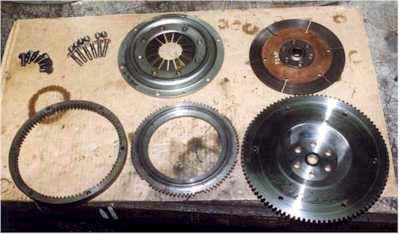
|
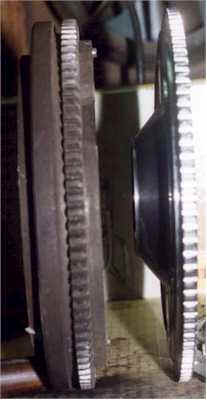
|
|
Remote Oil Filer Kit
|
|
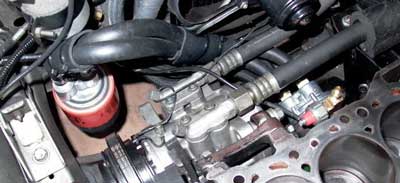 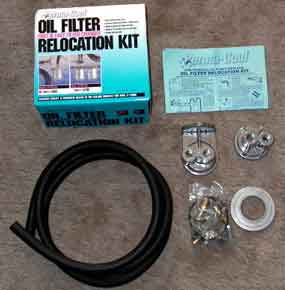 The kit is from
Perma-cool (kit #10695). It is the single filter universal kit. It comes with the adapter and mounting plates, thread adapters, fittings, 8' of hose, clamps, and instructions. It took about two hours to install it, and most of that time was figuring out the best place to mount the remote filter. Everything fit well, and I didn't have to run to the store for misc things, except for the oil filter. I have about a 1000 miles on it with no troubles. The kit is from
Perma-cool (kit #10695). It is the single filter universal kit. It comes with the adapter and mounting plates, thread adapters, fittings, 8' of hose, clamps, and instructions. It took about two hours to install it, and most of that time was figuring out the best place to mount the remote filter. Everything fit well, and I didn't have to run to the store for misc things, except for the oil filter. I have about a 1000 miles on it with no troubles.
The kit is from Jeg's, but almost everyone sells it. Jeg's has the cheapest
price.
|
|
Oil pan for extended pick up (Don's)
|
|
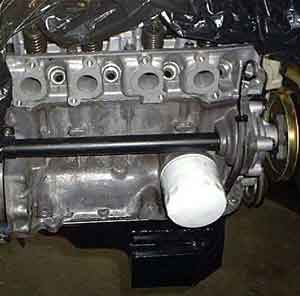 The same amount of oil will go up but there will be nothing left in the sump blowing the engine or at least shortening its life span. The stock special X or CVCC deluxe gauges move too slow to see the oil pressure drop! A mechanical gauge will show the problem right away. The minimum should be don't corner this hard if you don't have an
accuusump. I have designed a deep sump pan with baffles that is better than what the early Honda shops used to do. It works very well for competition use. A dry sump system is the best for competition but its very very expensive. shows the deep pan I built for my car. A more complex solution is the use of an Oil Accumulator. The same amount of oil will go up but there will be nothing left in the sump blowing the engine or at least shortening its life span. The stock special X or CVCC deluxe gauges move too slow to see the oil pressure drop! A mechanical gauge will show the problem right away. The minimum should be don't corner this hard if you don't have an
accuusump. I have designed a deep sump pan with baffles that is better than what the early Honda shops used to do. It works very well for competition use. A dry sump system is the best for competition but its very very expensive. shows the deep pan I built for my car. A more complex solution is the use of an Oil Accumulator.
|
|
Starter
|
|
Higher comp ratio does make the engine harder to turn over. Get a gear reduction starter from the 80-83 cars to make it better. I've got an EN1 with high CR, and I'm using a 1984 Accord starter. Spins the engine very easily. The original starter hardly turned the engine over and killed the battery before I even got the car started.
|
|
Fuel Pump
|
|
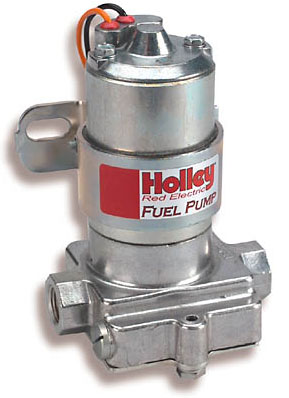 I've gone through several different electric fuel pumps over the years. I got rid of a Carter because it was too noisy. The Mallory died after a couple of years. Currently, I'm running a Holley. Basically, just get a
non-FI pump and a regulator that'll run at 3-4 psi. Mount the pump near the tank and the regulator next to the
carburetor. I've run my stock carburetor and a couple of Webers (32/36 and 38DGES) with no problems. I run mine at 3.5
PSI, as I've been told that Webers like that, and that 6 PSI will blow the needle off the seat. I've gone through several different electric fuel pumps over the years. I got rid of a Carter because it was too noisy. The Mallory died after a couple of years. Currently, I'm running a Holley. Basically, just get a
non-FI pump and a regulator that'll run at 3-4 psi. Mount the pump near the tank and the regulator next to the
carburetor. I've run my stock carburetor and a couple of Webers (32/36 and 38DGES) with no problems. I run mine at 3.5
PSI, as I've been told that Webers like that, and that 6 PSI will blow the needle off the seat.
 
|
|
Mugen MS1 CV Carburetors HP listed at 85 @ 7000 per Mugen
Pictures courtesy of Don Forman
|
|

|
|
MS2 no picture HP listed at 125 @800 per Mugen
|
|
|
|
Mugen MS3 engine Note CR carburetors this is from the Yamato Civic in Japan
|

|
|
Mugen MS3 Engine Adrain knows more about this one, it was used in Formula cars and some sedans
|

|
|
|
|
 |
 |
 |
 |
|
 |

